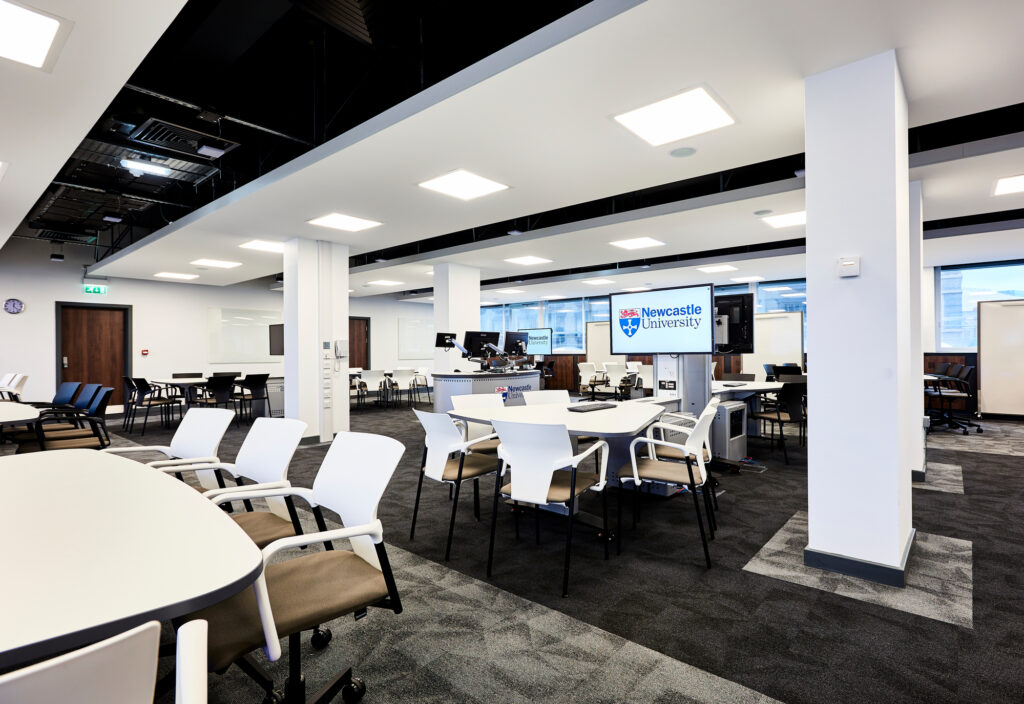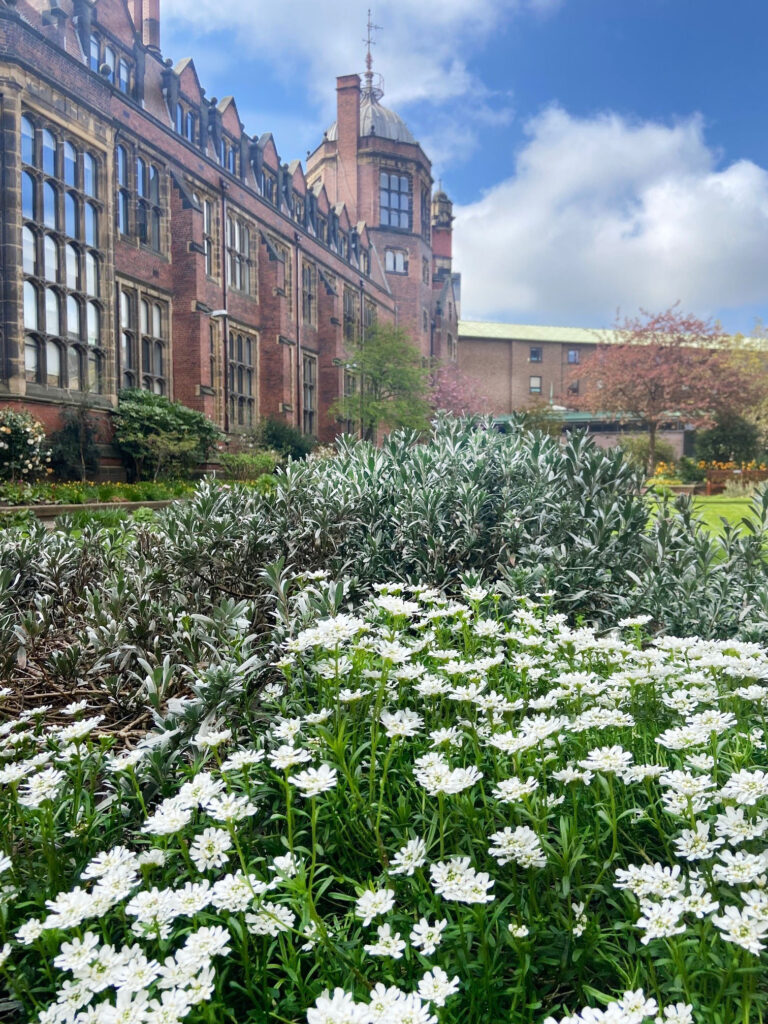
The University’s lovely Planning Team are responsible for designing and delivering our campus’s impressive variety of beautiful and cutting-edge spaces, both indoor and outdoor. This work has a major role to play in the environmental commitments of our institution and so we decided to have a chat with our friends in Planning to see how they’re incorporating sustainability into their practice. Here’s what we learnt.
How Planning works
One of the main functions of the Planning Team is to receive and solve Space and Project Requests (SPRs) which are sent to them by colleagues all across the University. These requests might involve the creation of a new teaching space for a growing department, for instance, or perhaps the conversion of a room to provide specialist resources. For each request, the Planning Team devises solutions to provide for the requester’s varied needs and maximise the potential of the spaces involved. As part of this process, our planners pay close attention to the sustainability of each project throughout its conception and delivery in a number of impactful ways.

Sustainable practice
Importantly, following the Carbon Literacy Training that some members of the team undertook, the Planning Team have developed a “carbon conscious methodology” for their work which incorporates a range of sustainable approaches and complements the environmental guidance written into the University’s procurement framework. These methods range from limiting hard landscaping and protecting green areas where possible, to considering how spaces can be designed in a versatile manner to accommodate several uses at different times. Additionally, when delivering on SPRs, the team considers sustainability from the very outset by conducting their own research to ensure the necessity of each request. This evaluation is then followed by a consideration of how existing spaces and features can be reused to lengthen their life – similar to repairing clothes instead of buying new!
Where items are no longer needed or replaced, however, the team puts the responsibility for dealing with the unwanted furnishings on the requester, to ensure that simply throwing items away is never the easiest option. Thanks to this, these items are then either reused somewhere else in the University (via our furniture reuse list, for example!) or are disposed of responsibly by contractors such as the wonderful people at RightGreen. As if this wasn’t enough already, the team are also full of ideas for how their planning can become even more sustainable in future!

Sustainable futures
Core to these aspirations is a holistic view of the planning process. This involves taking moments to pause and consider the sustainability of each aspect of a project, for instance, and considering the full lifecycle of each space including how it can be reused and/or returned to nature at the end of its lifespan. One of their ideas for putting this into practice is adapting University College London’s Laboratory Efficiency Assessment Framework (LEAF), which Newcastle University uses, to allow those submitting SPRs for a variety of spaces to gain accreditation for environmentally friendly reuse and refurbishment. These ideas build on the amazing suite of sustainable policies our planning team already utilises to offer an exciting vision of what the future of Planning could look like at Newcastle University.
So, next time you’re on our brilliant campus, whether you’re enjoying our labs, lecture theatres, historic buildings, or green spaces, take a moment to appreciate the hard work our amazing planners do to bring these high-quality spaces to us in as sustainable a manner as possible. Finally, if you want to learn more, please do check out the information on their blog also!
